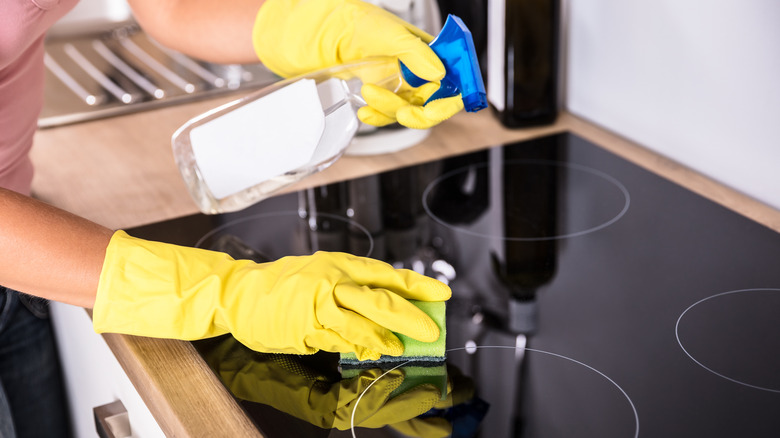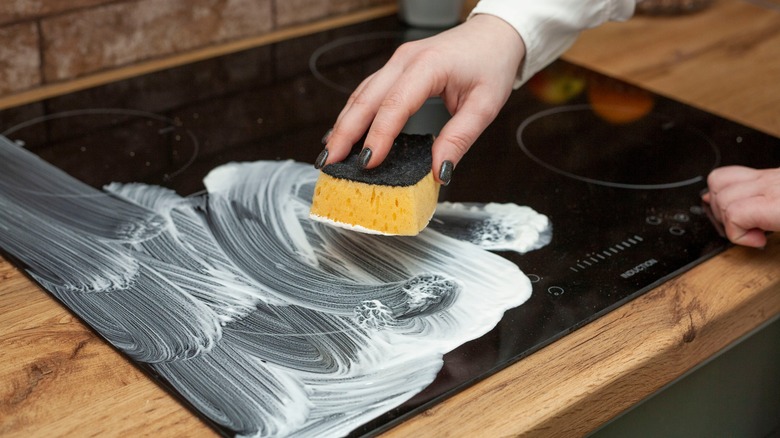The Major Cleaning Mistake You're Probably Making With Induction Stoves
Home cooks understand the ease and efficiency of applying the "Clean as you go" method while working in the kitchen. It ensures the maintenance of sanitary conditions, which are essential to food safety, and it also keeps post-cooking cleanup from building up into a massive task. Sometimes, though, it's not advisable to clean up spills or splatters immediately when there's a hot kitchen appliance involved.
Take induction stoves, for instance. A safer choice than electric stoves or gas ranges when it comes to temperature control, an induction stove heats the bottom of compatible cookware quickly and stops the transfer of heat immediately once it's turned off. However, although its cooktop surface cools down rapidly, it's not safe to wipe until you've removed the cookware, turned the stove off, and allowed the temperature to go down.
Cleaning the stove while it is still on and hot is a costly mistake that can damage the cooktop surface, especially when you use a commercial cleaning solution to wipe it down. The chemicals in the liquid might react adversely to the heat and leave spots on the glass. Plus, although there's a low risk of burning yourself with an induction stove, you still shouldn't be careless when handling it.
This doesn't mean you can put off cleaning your induction stove until the mess has dried on the cooktop. Simply wait a few minutes after turning it off before wiping it down. Daily maintenance goes a long way in keeping it functional.
Choose cleaning solutions that are safe to use on induction stoves
Since induction stoves come with a glass stove top, you might think nothing of using a glass cleaner on yours. However, according to electronics company Sharp, this solution contains ammonium hydroxide. Should you use it for cleaning and then turn on the stove while the solution hasn't completely dried yet, the heat could trigger the solution to release ammonia gas, which is harmful to anyone who inhales it, according to the CDC.
Avoid using abrasive cleaning cloths or scrub pads that could scratch the glass as well. Instead, use paper towels, a soft sponge, or cooktop cleaning wipes to clean up spills. Carefully remove any stuck food residue with a scraper designed for glass surfaces.
There are induction stove-friendly cleaning solutions available in the market, but for something effective and economical, you can make your own by mixing one part water and one part vinegar in a spray bottle. After you've removed any dried grease splatter or food residue with a scraper, spray the mixture on the glass cooktop and let it sit for 10 to 15 minutes. Wipe the surface afterward with a paper towel or soft cloth. For stubborn grease stains and buildup, you can sprinkle baking soda on the cooktop surface and then spray diluted vinegar over it. Clean everything off with a soft cleaning pad once the mixture stops fizzing. Give your glass cooktop a nice buff afterward, making small, circular movements with a dry cloth.

